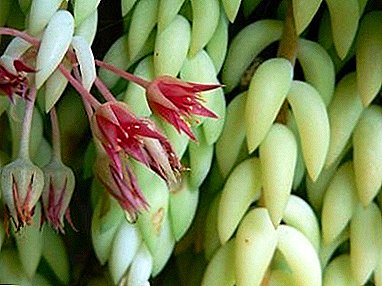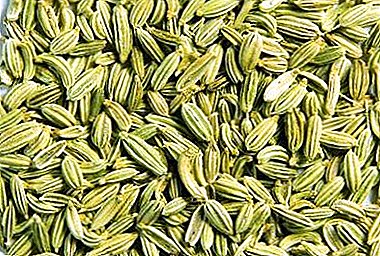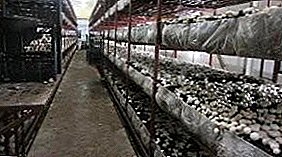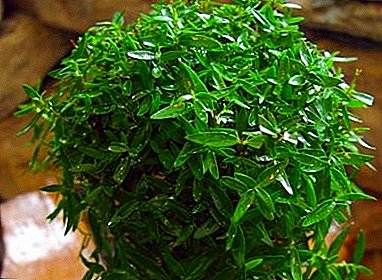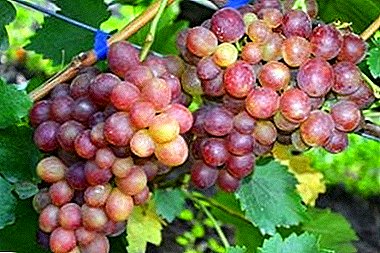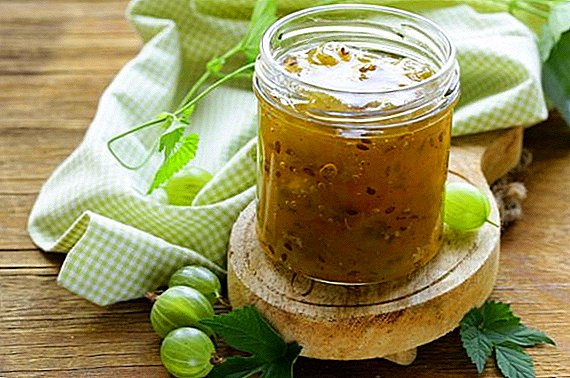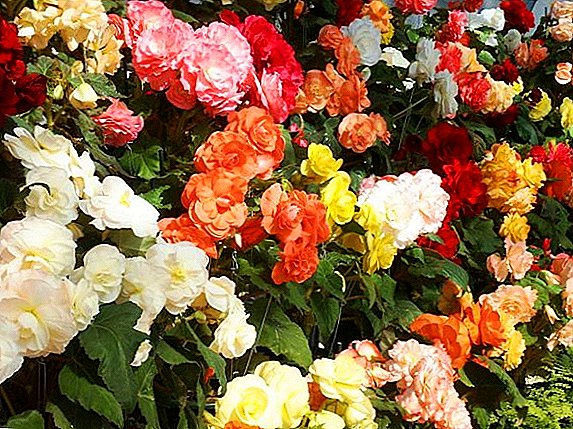 Begonia is one of the most popular and beautiful plants on domestic window sills, in gardens and parks of the city. This plant has more than 900 full and 2000 hybrid species. The flower was first described by Michel Begon, who discovered a decorative, incredibly beautiful flower in the Antilles. Later breeders defined it as a type of orchid. On how to properly care for the most common types of begonias, we will discuss in this article.
Begonia is one of the most popular and beautiful plants on domestic window sills, in gardens and parks of the city. This plant has more than 900 full and 2000 hybrid species. The flower was first described by Michel Begon, who discovered a decorative, incredibly beautiful flower in the Antilles. Later breeders defined it as a type of orchid. On how to properly care for the most common types of begonias, we will discuss in this article.
Royal Begonia
 Increasingly, you can find different types of begonias on the window sills of florist. Of particular interest is the Royal Begonia, which is isolated in a separate species, as it has the largest number of hybrid varieties of begonia.
Increasingly, you can find different types of begonias on the window sills of florist. Of particular interest is the Royal Begonia, which is isolated in a separate species, as it has the largest number of hybrid varieties of begonia.
The most common hybrid of this species is "Begonia Rex"This is a perennial bush-shaped plant with a large rhizome. The stem of the plant is short, the leaves are heart-shaped with a variegated color. The top plate is covered with velvet and resembles a tight film from the bottom.
Did you know? Royal begonia was first discovered in 1856 in London at an auction among orchids. Began to breed new types of begonias began in 1859 (3 species), after that breeders "took the begonia in the development."
One of the last hybrid begonias bred by flower growers is Begonia Griffin - a large plant that can grow up to 41 cm in height, with broad decorative leaves. This is not the only hybrid type of begonia. Let us consider in more detail each of them.
 Begonia "Escargot" - a fairly large plant, reaching a height of 30 cm. The leaves of this species are formed at the stem, which is similar to the shell of a snail. Green leaves with silver stripes. This hybrid begins to bloom in early summer with white.
Begonia "Escargot" - a fairly large plant, reaching a height of 30 cm. The leaves of this species are formed at the stem, which is similar to the shell of a snail. Green leaves with silver stripes. This hybrid begins to bloom in early summer with white.
"Dollar down"- one of the smallest hybrid species of this plant. This flower in adulthood quietly fits in a pot with a diameter of 8-10 cm. The leaves are very brightly colored: a rich red color with a brown close to black border.
"Mini merry"- despite the name, it reaches up to 30 cm in height and 40 cm in width. The leaves of this hybrid are small, satin texture, red with a bright green gradient. Border on a leaf of burgundy dark color, velvety texture. The center of the leaf corresponds to the color of the frame.
"Merry christmas"- one of the most popular among gardeners hybrids begonias. The plant grows up to 35 cm tall. The leaves are small, asymmetrical, egg-shaped. The edge of the leaf is slightly pubescent.
The spots on the leaf are dark, of a maroon-brown color, moving crimson closer to the edge, and silver-emerald on the very edge. The leaf border is brown-maroon. Blooms large, pinkish flowers on small peduncles.
 Another hybrid begonia - "Benitochiba"- the result of" coitus "" Filigree "and" Luxurians ". By mistake, this hybrid is called" Begonia Rex Benichoma ", however, this is not true. This hybrid was bred by Japanese Misono in 1973. The height hardly grows, the leaves are very thick It usually blooms at the end of summer with red-pink flowers.
Another hybrid begonia - "Benitochiba"- the result of" coitus "" Filigree "and" Luxurians ". By mistake, this hybrid is called" Begonia Rex Benichoma ", however, this is not true. This hybrid was bred by Japanese Misono in 1973. The height hardly grows, the leaves are very thick It usually blooms at the end of summer with red-pink flowers.
HybridIron cross"- not iron, as you can guess from the name. The flowers are heart-shaped, large, bright green with a brown cross in the center.
Hogweed begonia
A very popular form of begonias, often found in the country, is Begonia Borschavikolistnaya. This species is rather large, with a fleshy, creeping stem reaching a height of 40-50 cm.
The leaves of this species of begonias are large, up to 30 cm in length. Coloring can be different: from bright green to light green. On the inner side of the sheet is light green or red-brown, covered with "down".
The brush of the flower is rather large - 40-50 cm; flower pink or white. Flowering begins from the end of February and lasts until April. Especially actively the flower develops in spring and summer.
This species has several hybrid forms.
 Borschworm black leaf begonia (Begonia heracleifolia var, nigricans), in contrast to the Begonia Borschavikolistnoy - the "mother" of this hybrid, this flower is completely decorative. The stem of the flower is fleshy, creeping, as in the original form.
Borschworm black leaf begonia (Begonia heracleifolia var, nigricans), in contrast to the Begonia Borschavikolistnoy - the "mother" of this hybrid, this flower is completely decorative. The stem of the flower is fleshy, creeping, as in the original form.
Large leaves are palmate-separate, 25 cm in diameter, arranged on short petioles, slightly pubescent along the edge. On top of the leaves are painted in light green with a transition to dark brown, on the inside the leaf has a light green color. Peduncle fairly high (40-50 cm), large flowers (2.5 cm) - bright pink.
Yellow begonia - it is a plant of a half-brush shape, 40-50 cm high. The rhizome is large, thick; shoots "lying". Petioles are pubescent. The leaves are large and razloie: 17-20 cm in length and about 15 cm in width. Along the edges of the leaves have small teeth, the tip is pointed.
The flowers are collected in inflorescences, the color is pale yellow. This species is often used for breeding hybrid varieties of begonias at home or in breeding plants.
Another popular hybrid begonia borschavikolistnaya is red begonia. This species is represented by a herbaceous plant lying on the ground. Stems slightly shortened.
The leaves are rounded, slightly beveled. In size, they are quite large, reaching 12-15 cm in length and 9-10 in width. From the outside they are dark green with a glossy shine, and from the inside are bright red.
The plant blooms from December and ending in June. The flowers are small, white with a pinkish tinge. Often this subspecies belong to the begonias ever-flowering indoor.
The begonia is brilliant - one of the most common hybrid plant species. Unlike its "sisters", this type of begonia is upright, tall (1.2 meters on average), branched, and shoots "bare."
 The leaves are heart-shaped oval in shape. The outer and inner side of the sheet differ only in the color tone: the top of the sheet is more saturated green, while the bottom is light green. This hybrid blooms almost all year round, except autumn. The flower may be pink or white.
The leaves are heart-shaped oval in shape. The outer and inner side of the sheet differ only in the color tone: the top of the sheet is more saturated green, while the bottom is light green. This hybrid blooms almost all year round, except autumn. The flower may be pink or white.
Limgon begonia (ampelous begonia) - a plant in the form of a shrub. The shoots of this hybrid are hanging down, 30-50 cm long.
Leaves are heart-shaped at the base. From the middle to the edge - egg-shaped. On the edge of the sheet wavy. Leaf size is 8-12 cm long and 5 cm wide. The leaves are attached to the stalks of a light green color. The leaf is light green, gives a yellowish tinge.
The plant blooms in summer and can take on any shade from light red to coral.
Begonia Bovera
Begonia Bovera - decorative home flower with beautiful dark green leaves, palmate-divided. Each finger has a bright green spot. The leaves are small, on low, pubescent petioles. The plant is in the form of a small bush, reaches a height of 10 cm.
 This species refers to those begonias that are called flowering. Blooms in spring with pale pink or white flowers. The plant is not very whimsical and feels good at home, easily reproduces. The lower the temperature in the room, the less often you need to water this type of begonia.
This species refers to those begonias that are called flowering. Blooms in spring with pale pink or white flowers. The plant is not very whimsical and feels good at home, easily reproduces. The lower the temperature in the room, the less often you need to water this type of begonia.
The plant is unpretentious in the care and requires a transplant only once a year (preferably in a mixture of peat and earth). Lighting is better to choose not very bright, because from too bright rays leaves can lose color.
Coral begonia
Very beautiful variety of begonias, which is also called "angel wings". The leaves are spotty, bright green. The plant blooms with small pale pink flowers. This variety blooms at different times, depending on the hybrid, but most often and most actively - in late winter or early spring.
This species has many subspecies, which can vary in height (dwarf coral begonias - no more than 30 cm, while shrubs grow over 90 cm).
This plant is unpretentious, well tolerates the usual human room temperature, can be in bright light, but not under direct rays. It does not require a special irrigation regime, it is enough to water it when you notice a dried up top layer of the earth.
Replacing in a larger pot is enough once a year - in the spring. Can be propagated by vegetative (cuttings) and seed methods.
The most common hybrids:
- "Bubbles"- blooms almost all year round. Flowers are red-orange.
- "Looking glass"- grows quite large, from 30 to 90 cm in height, blooms pink. On the outside, the leaves are silvery, with veins of olive-green color. On the inside - red.
- "Kracklin rosie"- view with dark red, dotted with pink peas leaves.
- "Sophie cecile"- greenish-brown leaves with a white dot.
- "Orococo"- perhaps one of the most beautiful hybrid varieties of Coral Begonia. The leaves are green and gold, ivy-shaped.

Cleopatra Begonia
 This species is a frequent visitor on the windowsills of domestic houses. The plant is familiar to all from childhood. Its size is quite large - up to 50 cm. The stem of the flower is straight and thin, covered with "down". The leaves are green on the outside and brown - on the inside. On the leaves there is a "covering" of small, light hairs.
This species is a frequent visitor on the windowsills of domestic houses. The plant is familiar to all from childhood. Its size is quite large - up to 50 cm. The stem of the flower is straight and thin, covered with "down". The leaves are green on the outside and brown - on the inside. On the leaves there is a "covering" of small, light hairs.
Did you know? The color of the sheet may vary depending on the angle of illumination. Can "color" from light green to brown shades.
Cleopatra Begonia does not tolerate cold air, and it is better to place it in warm, well-lit rooms on the west or east side. It is possible to propagate this type of begonia both vegetatively and in the seed way.
Metal begonia
 Representatives of this type of begonias are rather large, herbaceous plants with a height from 60 to 90 cm in height.
Representatives of this type of begonias are rather large, herbaceous plants with a height from 60 to 90 cm in height.
The leaves are large, with a glossy sheen. Leaf length 10-15 cm, width: 5-8 cm. The plant is highly branched.
Did you know? Metal Begonia does not like spraying, it is better to humidify the air by placing a container with water next to the flower.
Begonia Metallic does not require a special temperature, it feels good at room temperature. Watering can be every 3 days, depending on how quickly the soil dries. For "life" is better to choose acidic or slightly acidic soil.
Begonia meson
 Mason's Begonia It is impossible not to recognize among the other types of begonias. The height of a plant can reach up to 30 cm, and the stem with a leaf grows up to 20 cm. On each leaf a cruciform pattern of amber-brown color appears.
Mason's Begonia It is impossible not to recognize among the other types of begonias. The height of a plant can reach up to 30 cm, and the stem with a leaf grows up to 20 cm. On each leaf a cruciform pattern of amber-brown color appears.
The leaves are rough, heart-shaped, sharp to the tip. In spring and summer, small flowers of emerald color appear on the plant, which “fold” into the inflorescence of the panicle.
Care for Begonia Mason is simple enough, you only need to systematically water the plant, protect it from drafts and loosen the soil. You can propagate vegetatively and seeds.
Important! For vegetative propagation, you can use the faded leaves of the plant, they do an excellent job with the work of the cutting.
Striped begonia
 Begonia Striped native to South America, and tropical habitats with high levels of humidity are the natural habitats of this species.
Begonia Striped native to South America, and tropical habitats with high levels of humidity are the natural habitats of this species.
It grows in the form of a bush. Shoots straight, with a large number of sheets. The leaves are lanceolate, pointed at the base, with a vertical vein on the outside.
The leaf is glossy saturated green color, with a bluish tint from the outside. Prozhilka light silver. The surface texture is velvety. From the inside the sheet is dark red. The flowers are small in size, white and pink.
Tiger begonia
 Tiger Begonia - ornamental deciduous plant with incredible beauty leaves. This is a plant with erect, branched stem.
Tiger Begonia - ornamental deciduous plant with incredible beauty leaves. This is a plant with erect, branched stem.
Its leaves are rather large (up to 7 cm in length), heart-shaped, pointed to the tip and slightly beveled. The color of the leaves is olive-brownish, with white specks, for which this species got its name.
This plant lives at room temperature, but in winter you need to "lower the degree." This variety does not tolerate direct sunlight.
Important! Do not allow water to fall on the leaves of the begonias when watering.
Watering should be systemic, but not too abundant so that the water does not stagnate. For additional moisture near the pot, you can put a container with water, wet sand or expanded clay.
Begonia point
 The native land of this species is tropical zones of Africa. This variety includes various subspecies that differentiate according to the shape of the leaf. The leaves may be round, crowded, obliquely heart-shaped. The leaves are glossy, green, strewn with bright spots across the surface.
The native land of this species is tropical zones of Africa. This variety includes various subspecies that differentiate according to the shape of the leaf. The leaves may be round, crowded, obliquely heart-shaped. The leaves are glossy, green, strewn with bright spots across the surface.
The inflorescence is yellowish-white in color on a loose stem. Usually, the buds "take" a part of the force from the plant, so for the preservation of the beautiful appearance of the leaves, the buds can be carefully cut.
This species grows best in a warm, well-lit place. The plant should be protected from an abrupt change of lighting, in the summer it should be taken away from the window glass, in the winter - on the contrary, it should be placed closer.
The plant is almost greenhouse, so it can not be carried out on the street, even in summer. Watering should be regular and neat: due to the ingress of water on the leaves on them may appear brown spots.
Feed this species in the period from March to October once a month. The air should be humid, but it should not be wetted with a spray, and in winter it is better to remove the pot away from the battery.
Tuberous hanging begonia
Begonia - one of the most popular home tuberous plants, which can be found on the shelves of flower shops in the spring. Most often, seedlings are already sold with color.
This is a small annual plant. The rhizome of this begonia is cone-shaped creeping, for which she received the name "tuberous". The stem is rather rough, green with a pinkish tinge.
 The leaves are wide. The bush is decorated with large flowers that are 15 cm in diameter. In appearance, the flowers resemble a rose flower. and their color can vary from pure white to bright red, going through all the warm shades.
The leaves are wide. The bush is decorated with large flowers that are 15 cm in diameter. In appearance, the flowers resemble a rose flower. and their color can vary from pure white to bright red, going through all the warm shades.
The plant is "monoecious", that is, in the same pot can grow both "male" flowers (they are larger) and "female" (they are smaller, but the color is brighter). If you suddenly want something sour, you can try the flower of begonia, it is edible.
Did you know? The surface of the leaf begonias can be as covered as a pile, and glossy!
When ensuring proper care, it is important to take into account that the flower likes bright, protected from the wind places, because the shoots are very fragile and can easily be deformed.
The best varieties of tuberous begonias are often used by breeders to decorate winter gardens and apartments, as it is easier to propagate them.
Multicolor tuberous begonia
This type of begonia is represented by a plant with double or semi-double flowers, which usually appear in early summer and fade with the first autumn days. Flowers can be orange, red, pink or yellow. This variety belongs to the species of begonia ever flowering tuber.
Important! This type of begonia can be sprayed once a week with very dry air.
 To accommodate this variety should choose a well-lit places, but not direct sunlight. Watering should be carried out as the topsoil dries out, in summer it is enough to water it once a week. You can feed up when the tubers and inflorescences are formed. Loves clay soil.
To accommodate this variety should choose a well-lit places, but not direct sunlight. Watering should be carried out as the topsoil dries out, in summer it is enough to water it once a week. You can feed up when the tubers and inflorescences are formed. Loves clay soil.With proper care, any type of begonia will become a real decoration of your home, and the decorative look of a tropical plant will remind you of summer.


